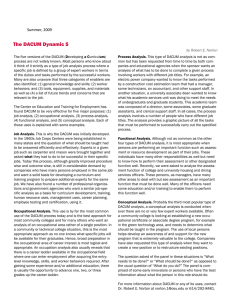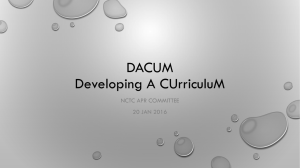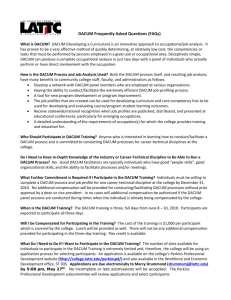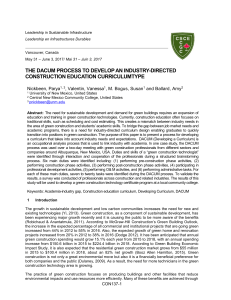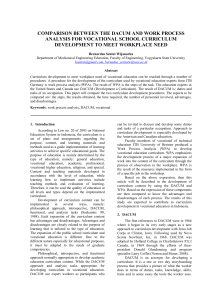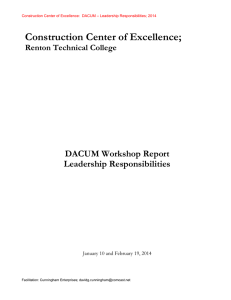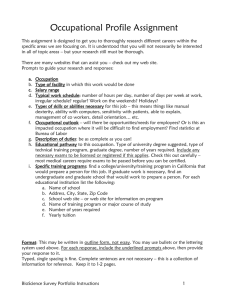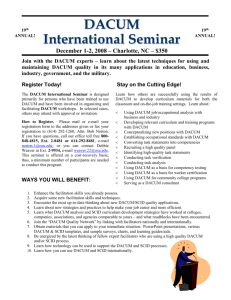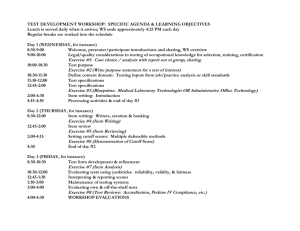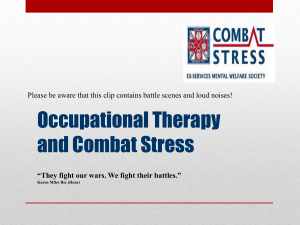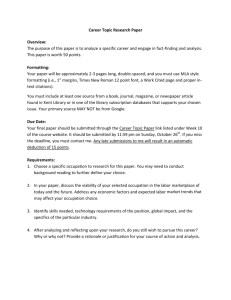DACUM Job Analysis
advertisement
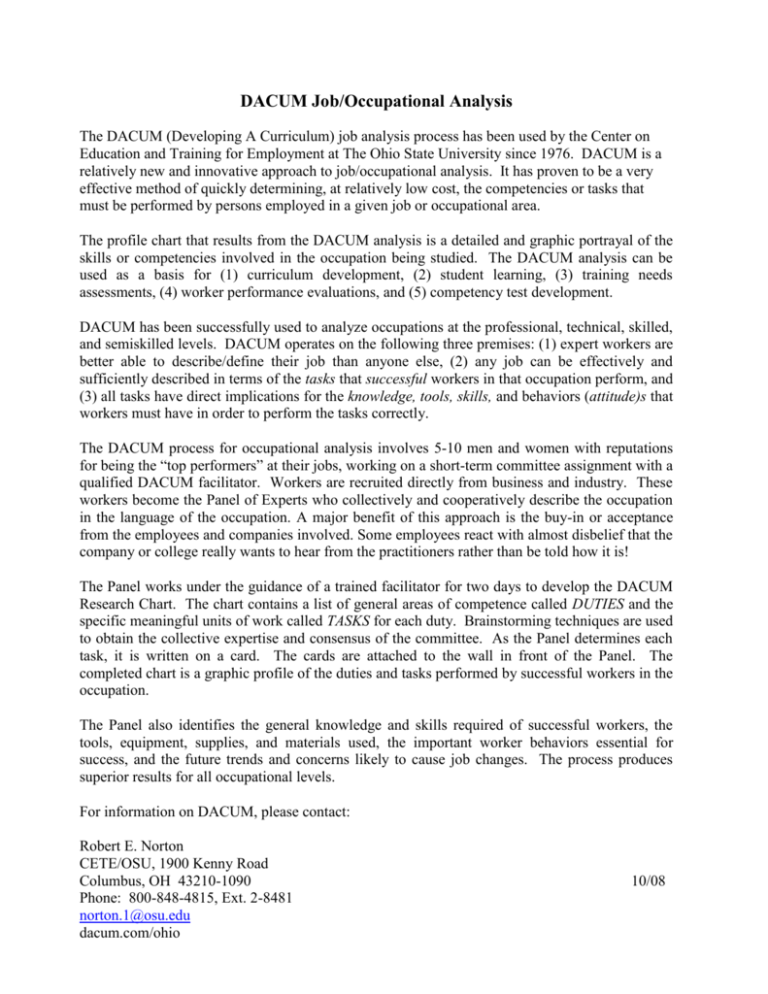
DACUM Job/Occupational Analysis The DACUM (Developing A Curriculum) job analysis process has been used by the Center on Education and Training for Employment at The Ohio State University since 1976. DACUM is a relatively new and innovative approach to job/occupational analysis. It has proven to be a very effective method of quickly determining, at relatively low cost, the competencies or tasks that must be performed by persons employed in a given job or occupational area. The profile chart that results from the DACUM analysis is a detailed and graphic portrayal of the skills or competencies involved in the occupation being studied. The DACUM analysis can be used as a basis for (1) curriculum development, (2) student learning, (3) training needs assessments, (4) worker performance evaluations, and (5) competency test development. DACUM has been successfully used to analyze occupations at the professional, technical, skilled, and semiskilled levels. DACUM operates on the following three premises: (1) expert workers are better able to describe/define their job than anyone else, (2) any job can be effectively and sufficiently described in terms of the tasks that successful workers in that occupation perform, and (3) all tasks have direct implications for the knowledge, tools, skills, and behaviors (attitude)s that workers must have in order to perform the tasks correctly. The DACUM process for occupational analysis involves 5-10 men and women with reputations for being the “top performers” at their jobs, working on a short-term committee assignment with a qualified DACUM facilitator. Workers are recruited directly from business and industry. These workers become the Panel of Experts who collectively and cooperatively describe the occupation in the language of the occupation. A major benefit of this approach is the buy-in or acceptance from the employees and companies involved. Some employees react with almost disbelief that the company or college really wants to hear from the practitioners rather than be told how it is! The Panel works under the guidance of a trained facilitator for two days to develop the DACUM Research Chart. The chart contains a list of general areas of competence called DUTIES and the specific meaningful units of work called TASKS for each duty. Brainstorming techniques are used to obtain the collective expertise and consensus of the committee. As the Panel determines each task, it is written on a card. The cards are attached to the wall in front of the Panel. The completed chart is a graphic profile of the duties and tasks performed by successful workers in the occupation. The Panel also identifies the general knowledge and skills required of successful workers, the tools, equipment, supplies, and materials used, the important worker behaviors essential for success, and the future trends and concerns likely to cause job changes. The process produces superior results for all occupational levels. For information on DACUM, please contact: Robert E. Norton CETE/OSU, 1900 Kenny Road Columbus, OH 43210-1090 Phone: 800-848-4815, Ext. 2-8481 norton.1@osu.edu dacum.com/ohio 10/08
